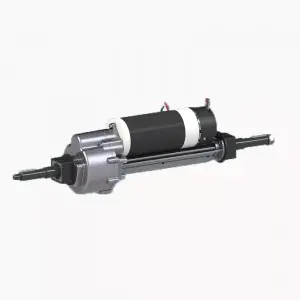The Chevrolet Corvette has long been a symbol of American automotive excellence, known for its performance, style and innovation. One of the major technological advancements in Corvette history was the introduction of the transaxle. This article will explore the role of the transaxle in the Corvette, focusing on the year it was first implemented and its impact on vehicle performance and design.
Understand the transaxle
Before we get into the details of the Corvette, it’s necessary to understand what a transaxle is. A transaxle is a combination of transmission, axle and differential in one unit. This design allows for a more compact layout, which is particularly beneficial in sports cars where weight distribution and space optimization are crucial. The transaxle helps lower the center of gravity, improves handling and improves overall performance.
The Evolution of Corvette
Since its introduction in 1953, the Chevrolet Corvette has gone through many changes. Initially, the Corvette had a traditional front-engine, rear-wheel-drive layout. However, as automotive technology advanced and consumer expectations evolved, Chevrolet sought to improve the Corvette’s performance and handling characteristics.
The introduction of the transaxle was a key moment in this evolution. It allows for a more balanced weight distribution, which is crucial in a sports car. By placing the transmission in the rear of the vehicle, the Corvette can achieve near 50/50 weight distribution, enhancing its handling and stability.
Year the transaxle was introduced
The transaxle made its debut on the 1984 C4-generation Corvette. This marked a major shift in Corvette design philosophy. The C4 Corvette isn’t just a new car; It’s a radical reimagining of the Corvette. The introduction of the transaxle is part of a broader effort to modernize the Corvette and make it more competitive with European sports cars.
The C4 Corvette features a new design that emphasizes aerodynamics and performance. The transaxle played a vital role in this redesign, resulting in a more streamlined shape and improved weight distribution. This innovation helps the C4 Corvette achieve better acceleration, cornering and overall performance compared to its predecessor.
Transaxle Performance Advantages
The transaxle introduced in the C4 Corvette delivers several performance benefits that significantly enhance the driving experience. Here are some of the main advantages:
1. Improve weight distribution
As mentioned before, a transaxle allows for more balanced weight distribution. This is especially important for sports cars, where handling and stability are crucial. The C4 Corvette’s near 50/50 weight distribution contributes to its superior cornering capabilities, making it a favorite among driving enthusiasts.
2. Enhance processing capabilities
With the transaxle located in the rear, the C4 Corvette benefits from improved handling characteristics. The rear-mounted gearbox helps lower the center of gravity and reduces body roll when cornering. This makes the Corvette more responsive and agile, allowing the driver to navigate tight corners with confidence.
3. Increase acceleration
The transaxle design also helps improve acceleration. By placing the transmission closer to the rear wheels, the C4 Corvette can transfer power more efficiently, resulting in faster acceleration times. In a market where performance is a key selling point, this is a significant advantage.
4. Better packaging
The compactness of the transaxle allows for more efficient use of interior space. This means the C4 Corvette can have a roomier interior and trunk, enhancing its utility without sacrificing performance. The design also achieves a sleeker appearance, contributing to the Corvette’s signature look.
Transaxle’s Legacy in Corvette History
The introduction of the transaxle in the C4 Corvette set a precedent for subsequent Corvettes. Subsequent models, including the C5, C6, C7 and C8, continued to use the transaxle design, further improving its performance and functionality.
The C5 Corvette was launched in 1997 and was based on the C4. It featured a more advanced transaxle system, which led to it being hailed as one of the best-performing Corvettes to date. The C6 and C7 models continue this trend, incorporating cutting-edge technology and engineering to enhance the driving experience.
The C8 Corvette released in 2020 marked a significant departure from the traditional front-engine layout. While it doesn’t use a transaxle like its predecessor, it still benefits from lessons learned from the C4 era. The C8’s mid-engine design allows for better weight distribution and handling, demonstrating the Corvette’s continued evolution.
in conclusion
The introduction of the transaxle in the 1984 C4 Corvette was a landmark moment in the history of this iconic American sports car. It revolutionized Corvette design and performance, laying the foundation for future innovations. The transaxle’s impact on weight distribution, handling, acceleration and overall packaging left a lasting legacy and continues to influence the development of the Corvette today.
As the Corvette continues to evolve, the principles established by the transaxle remain at the core of its design philosophy. Whether you’re a long-time Corvette fan or new to the brand, understanding the importance of the transaxle helps you appreciate the engineering excellence of the Chevrolet Corvette.
Post time: Oct-11-2024


